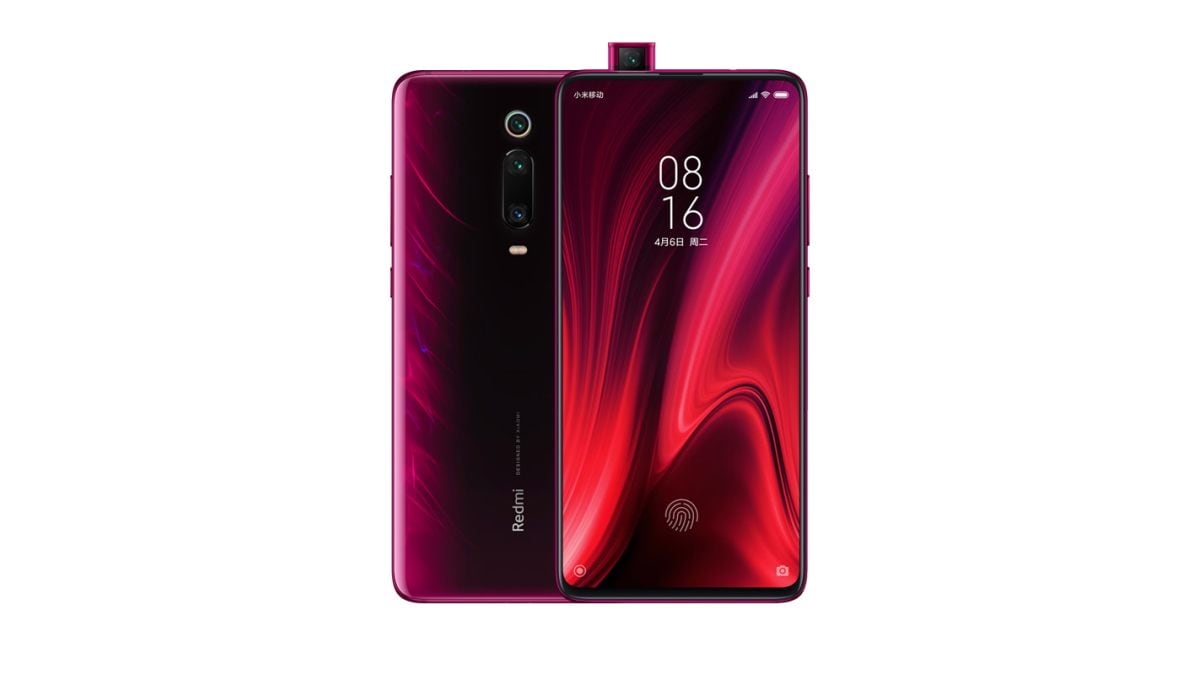Which is better between Redmi K20 Pro, OnePlus 7 and Asus ZenFone 6?

Price of Redmi K20 Pro vs OnePlus 7 vs Asus ZenFone 6
According to Redmi, new Redmi K20 Pro The starting price is 2,499 Chinese Yuan (approximately Rs 25,200). 6 GB RAM + 64 GB storage variant will be sold at this price. The 6 GB RAM + 128 GB, 8 GB RAM + 128 GB and 8 GB RAM + 256 GB storage variants are priced at CNY 2,599 (approximately Rs 26,200), CNY 2,799 (approximately Rs 28,200) and CNY 2,999 (approximately Rs 30,200) respectively. Rs).
in Indian market OnePlus 7 The price starts from Rs 32,999. 6 GB RAM / 128 GB storage variant will be available at this price. The 8 GB RAM and 256 GB storage variant of the smartphone will be sold for Rs 37,999. The 6 GB RAM variant will be available only in Mirror Gray color, while the 8 GB RAM variant will be available in Mirror Gray and Red color. The sale of OnePlus 7 will start in India in the month of June.
Snapdragon 855 processor has been used in OnePlus 7.
asus ZenFone 6 The starting price is 499 Euro (approximately Rs 38,873). 6 GB + 64 GB variant will be available at this price, its 6 GB + 128 GB storage variant is priced at 559 Euro (approximately Rs 43,547) and its top variant is equipped with 8 GB + 256 GB storage variant and its price is 599 Euro (approximately Rs 46,663). Rs).
Specifications of Redmi K20 Pro vs OnePlus 7 vs Asus ZenFone 6
First of all, let’s talk about display. The dual-SIM (Nano) Redmi K20 Pro smartphone runs on MIUI 10 based on Android 9 Pie. Redmi K20 Pro sports a 6.39-inch AMOLED full-HD+ (1080×2340 pixels) screen with a 19.5:9 aspect ratio. The dual-SIM (Nano) OnePlus 7 runs OxygenOS based on Android 9.0 Pie. OnePlus 7 has a 6.41-inch full-HD+ (1080×2340 pixels) Optic AMOLED display. The aspect ratio is 19.5:9 and the pixel density is 402 pixels per inch. There is Corning Gorilla Glass 6 protection on the display.
The dual-SIM (Nano) Asus ZenFone 6 runs Zen UI 6 based on Android Pie. Asus ZenFone 6 has a 6.4-inch full-HD+ (1080×2340 pixels) IPS screen, which has an aspect ratio of 19.5:9. The screen-to-body ratio is 92 percent.
Asus ZenFone 6 has rotating module with dual camera setup
Now let’s talk about processor, RAM and storage. Redmi K20 Pro uses 2.85 GHz octa-core Qualcomm Snapdragon 855 processor. It also has Adreno 640 GPU and up to 8 GB RAM. There is up to 256 GB storage to save photos, videos and other things, it is possible to increase the storage up to 512 GB with the help of microSD card.
Qualcomm Snapdragon 855 processor has been used in OnePlus 7 smartphone. Adreno 640 GPU is integrated for graphics. Up to 8 GB RAM is available for Jugalbandi. OnePlus 7 has two options based on storage – 128 GB and 256 GB UFS 3.0 2-lane storage. Asus Zenfone 6 uses octa-core Qualcomm Snapdragon 855 processor, up to 8 GB RAM and Adreno 640 GPU. The phone has up to 256 GB of inbuilt storage (UFS 2.1), it is possible to expand the storage up to 2 TB with the help of a microSD card.
Now let’s talk about camera setup. Redmi K20 Pro has three rear cameras, a 48-megapixel primary camera which is equipped with Sony IMX586 sensor and its aperture is F/1.75. There is a secondary camera of 13 megapixels, with a wide-angle lens and the third sensor is of 8 megapixels. A 20-megapixel pop-up selfie camera has been provided for selfie and video calling.
OnePlus 7 is a dual rear camera smartphone. The primary camera on the back is 48 megapixels. This is Sony IMX586 sensor. This lens with aperture F/1.7 is equipped with electronic image stabilization and phase detection autofocus. The secondary camera is 5 megapixels and its aperture is F/2.4. The rear camera setup will come with dual LED flash module. Features like Portrait, Ultrashot, Nightscape, Pro Mode, AI Scene Detection, Panorama, HDR, Studio Lightning, Time Lapse and Raw Image are also provided. The front camera of the phone is 16 megapixels. There is a Sony IMX471 sensor. The front camera has got a place in the notch.
Asus ZenFone 6 has a dual camera setup, a 48-megapixel primary sensor with an aperture of F/1.79 and comes with laser focus, as well as a 13-megapixel secondary ultra-wide angle camera. There is a dual camera setup on the back panel of the phone but it rotates to take selfies.
Now let’s talk about battery capacity. To bring life to Redmi K20 Pro, there is a 4,000 mAh battery which is equipped with 27 Watt fast charging support. The battery of OnePlus 7 Pro is 3,700 mAh. To bring life to this Asus brand phone, there is a 5,000 mAh battery which comes with Quick Charge 4.0 support.
Now let’s talk about connectivity. Talking about connectivity in Redmi K20 Pro, the phone has Wi-Fi 802.11 ac, Bluetooth version 5.0, GPS and NFC support. Connectivity features of OnePlus 7 include 4G VoLTE, Wi-Fi 802.11ac, Bluetooth 5.0, NFC, GPS/ A-GPS, and Micro-USB Type-C. Talking about connectivity, ZenFone 6 includes USB Type-C, NFC, Wi-Fi 802.11ac (Wi-Fi 5), Bluetooth version 5.0 and GPS.
Now let’s talk about dimensions and weight. The length and width of Redmi K20 Pro is 156.7×74.3×8.8 millimeters and weight is 191 grams. Whereas the length and width of Asus Zenfone 6 is 159.1×75.11×8.1-9.1 mm and weight is 190 grams.